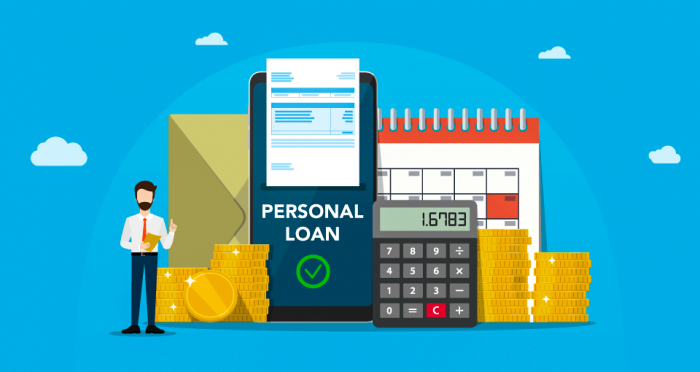
EMI is a crucial factor to determine when it comes to personal lending. It’ll help you know the exact cash outgo you’ll be required to make towards loan repayments until it’s paid fully.
A personal loan is the Holy Grail for anyone in fiscal crises. Whether it’s an emergency medical surgery or new business requirement, a personal loan can help tide over it all and more. These are collateral-free loans with competitive interest rates, broad eligibility requirements, minimal documentation, no end usage restrictions, and speedy approvals and disbursals.
However, a personal loan is also a liability just like any other lending option out there. The loan needs to be paid in full within a pre-agreed schedule. For each borrowed amount, you end up paying the principal, interest rates, processing fees, and other applicable charges in EMIs.
What are EMIs? How do they matter? More importantly, how to calculate them? Let’s discuss.
What are EMIs?
EMI stands for Equated Monthly Instalment. It’s the amount you pay towards repayment of your borrowing at a specified date month on month, year on year. The EMIs last until the loan is repaid in full, including principal, interest, processing fees, and other applicable charges. The EMIs, typically, remains unchanged for the entire tenor. In the first few years of the tenor, the EMIs pay the relevant interest. In the later years, they contribute towards the principal.
Every lender incorporates a personal loan EMI calculator on its website to help you compute EMIs for a given loan at an offered interest rate for a given tenor. While Manual calculations are tedious and prone to errors, the program does the math for you accurately and quickly.
How do they matter?
EMIs give you an exact idea of how much you’ll be contributing towards your loan repayments monthly for a given period. Once you know the EMI outgo, it’s easy to plan your finances accordingly. That translates into better financial management and complete peace of mind.
What affects EMIs?
EMIs are subject to three components, namely principle, interest and tenor.
- Principle: It’s the amount you borrow. Higher loan amount leads to higher EMIs. The lender ascertains the quantum of loan on your credit history, repayment capacity, and other factors. It’s imperative to evaluate your repayment capacity before personal loan apply to avoid default in EMI payments, which can be disastrous for your credit history.
- Interest: The lender earns from the lending by levying a certain percentage. It is the interest rate for you. Just like principle, interest rate shares a directly proportional relationship with the EMI. Higher interest rates translate into higher EMIs.
- Tenor: Tenor represents the time allotted for full credit repayment. EMI and tenors share an inversely proportional relationship. Longer tenors involve lower EMIs and vice versa. Typically, the tenor for a personal loan can range between one year and five years.
How to calculate them?
There’s a standard formula to calculate EMIs, no matter whether you do it manually, in an Excel Spreadsheet or through a personal loan EMI calculator on your lender’s website.
The formula: E = [P x R x (1+R) ^ N] / [(1+R) ^ N-1], where:
- E represents EMI
- P denotes the quantum of the loan (principal)
- R stands for a monthly interest rate.
- N reflects the monthly instalments payable.
Note that, the monthly interest rate is calculated by dividing the number of months in a year and multiplying it by 100. Say, 12% overall interest attracts 12/12X100 = 0.01 monthly interest.
Are you still confused? Let’s elaborate it with an example.
You borrow INR 20, 00,000 from an NBFC at 12% annual interest rate for a 5 year (60 months) period. Now, 20, 00,000 X 20 X (1 + 20) ^ 60 / (1 + 20) ^ 60 – 1 = 44,489.
Feel free to calculate the EMI for loan amounts, interests and tenors in any combination before personal loan application. That’ll help you arrive on educated decisions.
